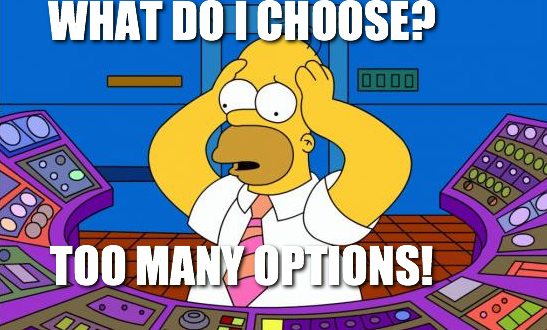And so here I am, at the beginning of the end: my last first blog post of a semester! For this week’s blog post, we were asked to define educational technology. To me, educational technology involves all the tools, strategies and different pedagogical ideals teachers strive for in the modern classroom and making it work authentically in a classroom while appreciating digital citizenship, rights and privacy of students. I think this is true, especially in our new-found “pandemic” classrooms.
When we began our supplemental learning in March, I felt prepared to go online. Certainly more prepared than most teachers in my school, and I have Alec’s courses to thank for that! However, that doesn’t mean it was an easy transition for me either. Sure, I had a Google Classroom set up already and was ready to continue rolling out content, but I was not prepared for the consequences remote learning held. There was much more to it than just throwing some PDF’s up on my Google Classroom and letting students work through it. I needed to engage them and that involved a lot of technological tools. Thankfully, I had heard of a lot of tools, like DeltaMath and Socrative, through Alec’s courses and was able to flounder my way through figuring them out to actually integrate in my classroom, but a lot of teachers were left to drown in resources with little professional development support.
Meira’s blog post this week mirrored this idea when she talked about her experiences with online learning: “As with the majority of my Edtech experience, there was no professional development. I feel learning or implementing educational technology is up to the teacher to search out, ask colleagues, and experiment with trial and error, to find what works for them and their students.” Teachers need support with Edtech, especially with where education is heading. There is a big push for educational technology in classrooms, now more than ever, just as Jocelyn said in her blog this week. She talked about the resources there are out there, yet we don’t know how to use them to their full potential.
The biggest shift in my teaching has been because of the pandemic and its restrictions on my classroom this year. I am so happy to be back in a classroom teaching rooms full of students instead of teaching through a screen and hoping my students are doing okay. I love seeing their faces and ACTUALLY talking to them, even if their faces are half covered and I have to yell at them so they can hear me through the mask and over the uni-vent in the back of my classroom. (The struggle is real…)
The biggest struggle I have had so far though is similar to that of online learning: how to make my classroom engaging. I can no longer have group work, small group discussions, or any activities that involve too much movement or students facing each other within the walls of my classroom. Of course, I can take them outside and I find myself using this option more and more in our daily routine, but what do I do when it’s -40°C and we can’t go outside? Winter is coming after all! So, I’ve been using the educational tools I’ve had at my disposal because I have to, and I want to engage them in the best way possible. There has been a mandatory push in my school division and most others to have an online learning platform. Done. This was the easy part for me. What isn’t easy is creating videos for content, setting up platforms for online student discussion, and creating online quizzes for students to complete every day. This stuff takes time and in the teaching world, we are already short on that. We can’t simply upload a PDF and hope students read it; we could, but most of us are more inclined to do better for our students.
When I think about why I use Edtech ideas in my classroom, I don’t think it was ever my personal idea to start. There was the bare minimum of technology even in my high school days, but in university, the ideas of using educational technology in the classroom was pushed on us, using tools like Polleverywhere, interactive whiteboards, and inquiry learning. These weren’t ideas we wanted to incorporate in our classrooms, they were things we were expected to incorporate and evaluated on in our internship. It was never authentic, it was an add-on and in “Five Things We Need to Know About Technological Change,” Neil Postman says, “Technological change is not additive; it is ecological…A new medium does not add something; it changes everything” (p. 4). We were expected to be the new generation of teachers that accepted change and educational technology and incorporated it willingly, even if it wasn’t the best. I think now, this push is
obvious even more with tools like Zoom, G Suites, and Flipgrid. It is an expectation to incorporate technology in the classroom and as Postman goes on to say in his article, “we must be cautious about technological innovation. The consequences of technological change are always vast, often unpredictable and largely irreversible” (p. 4).
I’m not saying this push is entirely bad, it is needed because our education system is in itself flawed. There needs to be more project-based education and more teaching tools than content for the ever-changing world we live in, but there also needs to be support for the technology we want in the classrooms. If teachers are left to struggle through, there isn’t an authentic benefit to it, and as soon as they can, they will go back to the tried-and-true ways of education and leave the educational tools behind. In order for educational technology to help us into the future of education, we need to develop more ways of educating teachers on HOW to incorporate it effectively as well as USE it authentically.






Great post Mackey! And thanks for the shut up. I totally agree that being back in the classroom is so much nicer than teaching through a screen. There is something more authentic and real with the real time interaction. I really find in our school that our students are so happy to be back that they are more engaged in lessons and have a little more of an appreciation for learning than they did last winter. I hope this continues but for now I will soak it all in!
LikeLiked by 1 person
Thanks for the comment Jocelyn! I totally agree. The kids (even grade 12’s) seem much more appreciative of their learning and schooling, even if they have to do it in masks! So far so good – let’s hope it continues!!
LikeLike
“In order for educational technology to help us into the future of education, we need to develop more ways of educating teachers on HOW to incorporate it effectively as well as USE it authentically.” Your last sentence in this post is such an important topic to consider as we could be transitioning in and out in person/remote learning this year. Like you said, teachers need time to learn how to implement new tech and to make sure they are creating engaging experiences for their students. Great post, Shelby! Looking forward to following your journey this semester.
LikeLiked by 1 person
Thanks so much for your comment Catherine! I really think that is such an important piece and it seems to be missing leaving a lot of people – teachers and students at a disadvantage. Let’s hope this transition could help change that inconsistency in ed tech!
LikeLike
Shelby you spoke to my core. I totally agree just uploading worksheets to Google Classroom is similar to the teacher who just does worksheets all day in class… soooo boring. Most teachers do want to do better but it does take TIME. I also agree that I am struggling with the COVID regulations to make in person lessons more engaging. I miss group work, games, manipulatives etc.
“If teachers are left to struggle through, there isn’t an authentic benefit to it, and as soon as they can, they will go back to the tried-and-true ways of education and leave the educational tools behind.” – Very true if you don’t truly sell what you are peddling to busy teachers we will quickly inauthentically check the box and ‘use it’ then throw it away.
LikeLiked by 1 person
Thank you Meira! I know a lot of teachers feel like us so I’m glad we have the platform to connect and talk about it more openly now. So much of teaching seems like checking boxes and moving on like you said. I really hope that can change.
LikeLike
Another quality post. Thanks for sharing your personal experiences with nice tie ins to the readings. I’m hoping there are some silver linings with all this and we all figure out how to use technology to provide everyone with more opportunities for what really matters and thats those connections. I can tell you are trying to harness the most you can from tech so you can invest in provided your students with the best learning and relationship experience possible. Looking forward to another class with you.
LikeLike
Thanks for a great read! I could not agree with you more, that it is important to provide teachers with professional development in using different technology to help engage students in learning. My experience with online learning also showed me how much we think students might know about technology and how much they actually know ( I teach grade 4 students). This year we started off the year learning/ re-learning how to log into google classroom, access assignments and how to log in if we ever need to be online this year. Pandemic learning I think has definitely presented new challenges for teachers, students and parents alike.
LikeLike